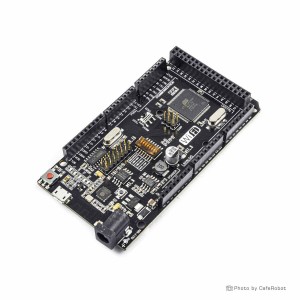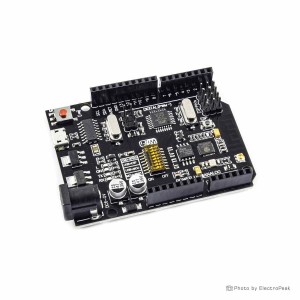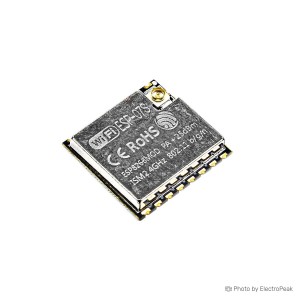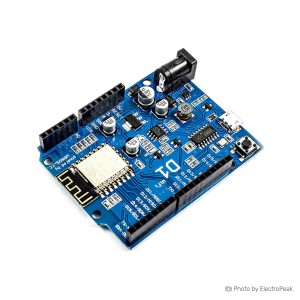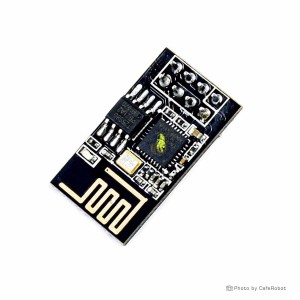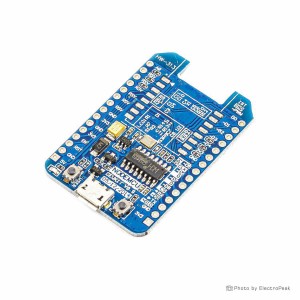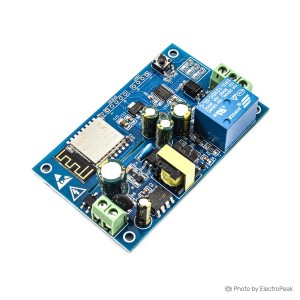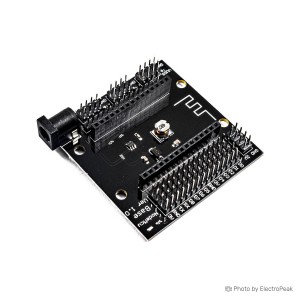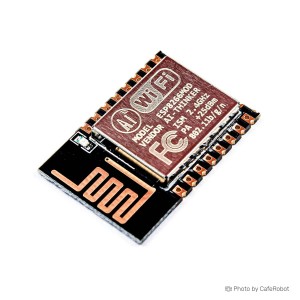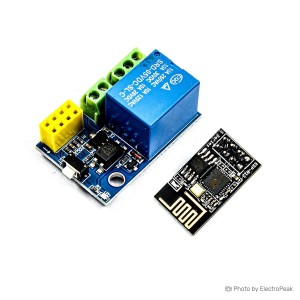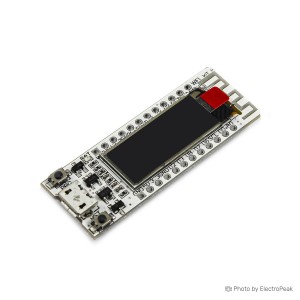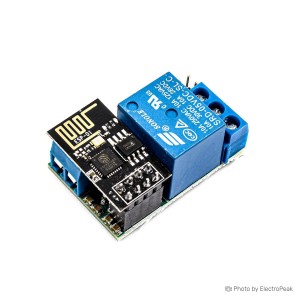ESP8266
ESP8266 Boards
The ESP8266 is a popular and affordable microcontroller developed by Espressif Systems. It's renowned for its built-in Wi-Fi capabilities, making it a preferred choice for IoT (Internet of Things) and wireless communication projects. The ESP8266 is equipped with a powerful processor, GPIO pins for versatile digital and analog interfacing, and compatibility with various programming environments, including Arduino IDE and MicroPython. Its compact size, low power consumption, and cost-effectiveness have made it a favorite among hobbyists and developers for tasks like sensor data collection, home automation, and connecting devices to the internet.
Price of ESP8266 Boards
The ESP8266 microcontroller offers a cost-effective entry point into the world of IoT (Internet of Things). Its price varies based on the specific model and features you require, but it generally provides an economical option for DIY projects and commercial applications. When budgeting for your IoT project, remember that the ESP8266's affordability doesn't compromise its capabilities, making it an attractive choice for various wireless communication and automation tasks.
Tips to Buy ESP8266 Boards:
When it comes to acquiring an ESP8266, it's essential to consider a few key factors. First, determine the specific model that suits your project, as there are various variants available. Ensure it aligns with your connectivity needs, whether you require Wi-Fi, Bluetooth, or both.
Keep in mind that the ESP8266 is a versatile microcontroller used in a wide range of applications, from smart home devices to industrial automation. By identifying your project's requirements and carefully selecting your source, you can make a smart and efficient purchase without breaking the bank.
Popular ESP8266 Boards:
The ESP8266 microcontroller family presents a diverse array of models, each expertly tailored to cater to specific requirements in IoT and wireless communication applications. Among these models are:
- ESP-01: A compact module equipped with 2 GPIO pins and 512KB of flash memory.
- ESP-12E: Boasting 22 GPIO pins, 4MB of flash memory, and support for an external antenna.
- ESP-07: Featuring 14 GPIO pins, 4MB of flash memory, and an integrated antenna.
- ESP-201: Offering 22 GPIO pins, 4MB of flash memory, and an external antenna connector.
- NodeMCU: A popular development board incorporating the ESP-12E module, facilitating USB-to-serial communication.
- WeMos D1 Mini: A user-friendly, compact development board with 11 digital pins, 1MB of flash memory, and a micro USB interface.
- Adafruit HUZZAH: A development board housing the ESP-12 module, featuring 9 GPIO pins, 4MB of flash memory, and an integrated LiPo charger.
- SparkFun Thing: A development board with 11 GPIO pins, 4MB of flash memory, and a USB-to-serial interface.
- Olimex MOD-WIFI-ESP8266-DEV: A development board equipped with 16 GPIO pins, 4MB of flash memory, and a PCB antenna.
- AI-Thinker ESP-12S: A module with 18 GPIO pins, 4MB of flash memory, and support for an external antenna connector.
The choice of model depends on your project's specific connectivity and performance needs, with these diverse options providing flexibility for a wide range of applications.
How much RAM and Flash Memory does ESP8266 have?
Flash Memory in ESP8266:
SPIFlash is a type of Flash memory used in ESP8266 microcontrollers to store program code, data, and configuration information. It comes in various types and sizes to accommodate different needs. The most common SPIFlash options include Winbond, GigaDevice, and ISSI.
The available sizes for SPIFlash in ESP8266 typically range from 512KB to 16MB. This variety allows developers to choose the right storage capacity for their specific applications. Some ESP8266 variants also support external SPIFlash for expanded storage.
PSRAM in ESP8266 :
ESP8266 doesn’t support PSRAM
Difference between Arduino Boards and ESP and STM
Arduino Microcontrollers:
Arduino IDE is the preferred programming tool, making it user-friendly and accessible. Known for their affordability, Arduino boards are suitable for diverse projects, providing moderate computational power and versatile clock speeds.
ESP (Espressif) Microcontrollers:
ESP microcontrollers, including the widely-used ESP8266 and ESP32, can be programmed using both the Arduino IDE and the advanced ESP-IDF (IoT Development Framework). They stand out for their cost-effectiveness, making them ideal for IoT projects. Designed for low to moderate power consumption, they are a solid choice for battery-powered IoT devices.
STM (STMicroelectronics) Microcontrollers:
Programming STM microcontrollers usually involves tools like STM8266CubeIDE or STM8266CubeMX or Keil MDK, which offer comprehensive support. While STM boards are generally priced higher, some models can utilize the Arduino IDE, providing more versatility. STM microcontrollers are distinguished by their high computational power and variable clock speeds. However, their robust performance may result in higher power consumption, making them better suited for non-battery-powered applications. STM excels in complex and resource-intensive projects.
In summary, your selection of microcontroller should be guided by your project's specific requirements, budget considerations, and power efficiency needs. Whether you choose the simplicity of Arduino, the cost-effectiveness of ESP, or the high performance of STM, picking the right microcontroller is pivotal to the success of your development process.
What Is the Difference Between CP2102 and CH340 on ESP8266 Boards
CP2102 and CH340 are two commonly used USB-to-serial converter chips with ESP8266 microcontrollers. While both serve a similar purpose of enabling USB connectivity, they have some distinctions:
- Vendor: CP2102 is produced by Silicon Labs, and CH340 is manufactured by WCH (WCH CHIPS).
- Driver Support: CP2102 often has better driver support across various operating systems, making it easier to install and use.
- Compatibility: CH340 is generally more budget-friendly, but it may require manual driver installation on some platforms.
- Community Preference: CP2102 is favored by many developers due to its reliability and widespread use, while CH340 is a cost-effective alternative.
- Voltage Levels: CP2102 supports 3.3V and 5V logic levels, while CH340 mainly operates at 3.3V.
Choosing between CP2102 and CH340 depends on your specific project needs and driver compatibility with your target platforms.
What programming languages can be used with ESP8266?
Developers can write code for the ESP8266 in C/C++, MicroPython, and Arduino IDE. This flexibility enables a broad spectrum of developers, from those comfortable with low-level languages to those who prefer a simplified IDE.
How do I get started with ESP8266 development board?
Getting started with the ESP8266 is a straightforward process, especially for beginners. We recommend using a development board like NodeMCU for its user-friendly features. After connecting the ESP8266 to your PC and installing the required drivers, choose your preferred programming language and install it on your computer to begin coding.
Visit our ESP8266 Tutorials page to get help and running with your ESP8266 boards
Can I use the Arduino IDE for ESP8266 programming?
Yes, the ESP8266 is Arduino-compatible, making it accessible to a wide audience. The Arduino IDE simplifies programming and offers a supportive ecosystem for both newcomers and experienced developers. For more information visit how to install ESP8266 with the Arduino IDE.
What are the power requirements for ESP8266 boards?
The ESP8266 typically operates at 3.3V. In general, you should use a linear regulator to power up the ESP8266. This allows you to use a range of linear regulators to provide power. Keep in mind that power requirements can vary depending on the specific ESP8266 variant and the power needs of your project.
What are the GPIO pins on ESP8266, and how do I use them?
ESP8266 provides a wide array of General-Purpose Input/Output (GPIO) pins, offering the flexibility to handle input, output, and other functions. This adaptability makes it suitable for diverse projects. Read more…
What are the supported communication interfaces on ESP8266 (SPI, I2C, UART)?
ESP8266 supports a variety of communication interfaces, including SPI, I2C, UART, and more. These interfaces enable easy integration with sensors and peripherals. For more information visit our ESP8266 pinout reference guide.
What is the maximum data transfer rate for Wi-Fi on ESP8266?
ESP8266 can achieve data rates of up to 72.2 Mbps in the 2.4 GHz band when using 20 MHz channel width.
However, real-world data transfer rates can often be lower due to factors such as interference and signal strength. It's essential to optimize your Wi-Fi network and ESP8266 configuration to achieve the best possible data transfer rates for your specific application.
How do I update the firmware on ESP8266?
ESP8266 firmware can be updated through over-the-air (OTA) updates, a wireless method, or by flashing new firmware using software tools, depending on your project requirements. For more information could read Getting Started with the ESP8266 on Arduino IDE article.
